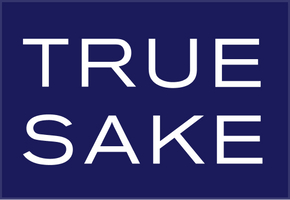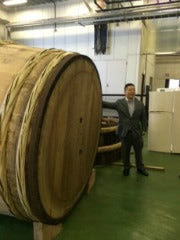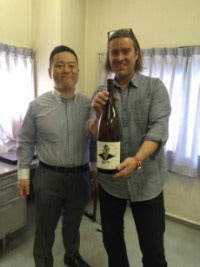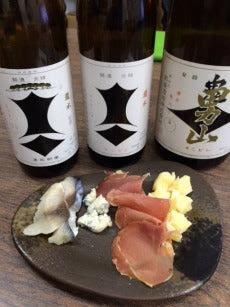Sake Bucket List – BT Visited The Mysterious Kenbishi Brewery
There are certain things that I would like to "do" within the sake industry - certain people I'd like to meet - certain sakes that I'd like to taste - and certain breweries that I'd like to visit before I die.
On my recent trip to Japan I got to check off one of those boxes. It's always been a dream of mine to visit the "secretive" sake brewery known as Kenbishi in Kobe city - an area that produces 30% of all sake made in Japan. (Yes there are some big breweries there including Hakutsuru, which is the largest in Japan)
Kenbishi is an anomaly. That's all I can say. It's a brewery trapped in time by its own making. It's a brewery that relishes the fact that it is the oldest "national brand" in sake that dates back to the days of samurai. They have proof! They know. They are 1505. Kenbishi or "black pine" is known pretty much by everybody who drinks sake, so it was always my desire to get within their walls to see how this brewery ticks! What I discovered was a very self-confident brewery that ticks to their own clock - their own style - their own pace - and certainly their own way of making sake.
Some simple facts:
- Kenbishi is the “Oldest Brand In Sake” since 1505.
- Kenbishi has 4 breweries.
- Kenbishi produces 20,000 Koku annually.
- Kenbishi has 80 kurabito and make handmade sake (little automation).
- Kenbishi uses their own ancient strain of mold.
- Kenbishi uses their own proprietary yeast.
- Kenbishi uses their own brewing rice called Aiyama. They have 500 farmers that grow this Aiyama rice and it's totally proprietary. (A sneaky farmer sold some seeds and this variety is now grown in three other prefectures - but it is not the pure strain - it's a derivative.) They also use copious amounts of Hyogo Yamada Nishiki
- Kenbishi has 13 water wells to choose from and they select two wells each season and tank deliver the water to each of their breweries for consistency’s sake.
- Kenbishi has four tojis. Their tojis don't add any new flare or techniques and they don't learn or use any information that is trending in the industry. They simply use their generational information.
- Kenbishi has more koji trays than I've ever seen in my life - and that's only in one brewery. The trays are made of split wood - not cut, because the rice does not stick to the split wood. Their koji making time frame is 60 hours plus! That's a long time.
- Kenbishi’s yamahai technique requires a 40-day shikomi and that's a long time. They believe what is in the air in the brewery makes for their unique flavor.
- Kenbishi uses a wood steamer and that is highly unusual by industry standards.
- Kenbishi are masters at blending batches of sake to create an overall and consistent flavor.
So what is Kenbishi to me? It’s basically 500 year-old sake! I was once in a bar in Kobe and the owner let me taste a vertical tasting of Kenbishi Honjozo sake that was up to 22 years old. He literally had an ishobin from every year of his adult life and he let me taste about 25 different years and I was stunned at the balance, similarity, and flavor of each year. They were almost exactly alike and that is just a testament to the fact that they have been doing things the same way forever. I tasted “forever.”
I am indebted to Masataka Shirakashi who is the son that will one day be the president for taking me around the brewery on a Sunday! I also am indebted to him for putting out an amazing tasting spread that featured Saba, stinky cheese, and prosciutto. His sakes pair so well with big and bold flavors that focus on rich and full-bodied elements. The best fact that he shared with me was that at the beginning of each brewing season the four tojis create a special blend sake then bottle it under the name Oni-bishi. This sake is only for the kurabito and it never leaves the breweries. And guess how many bottles the 80 kurabito consumed last season? 3,000 ishobins (1.8L). That is a ton of sake and it simply means that these guys like to drink what they make and that is a good thing!



